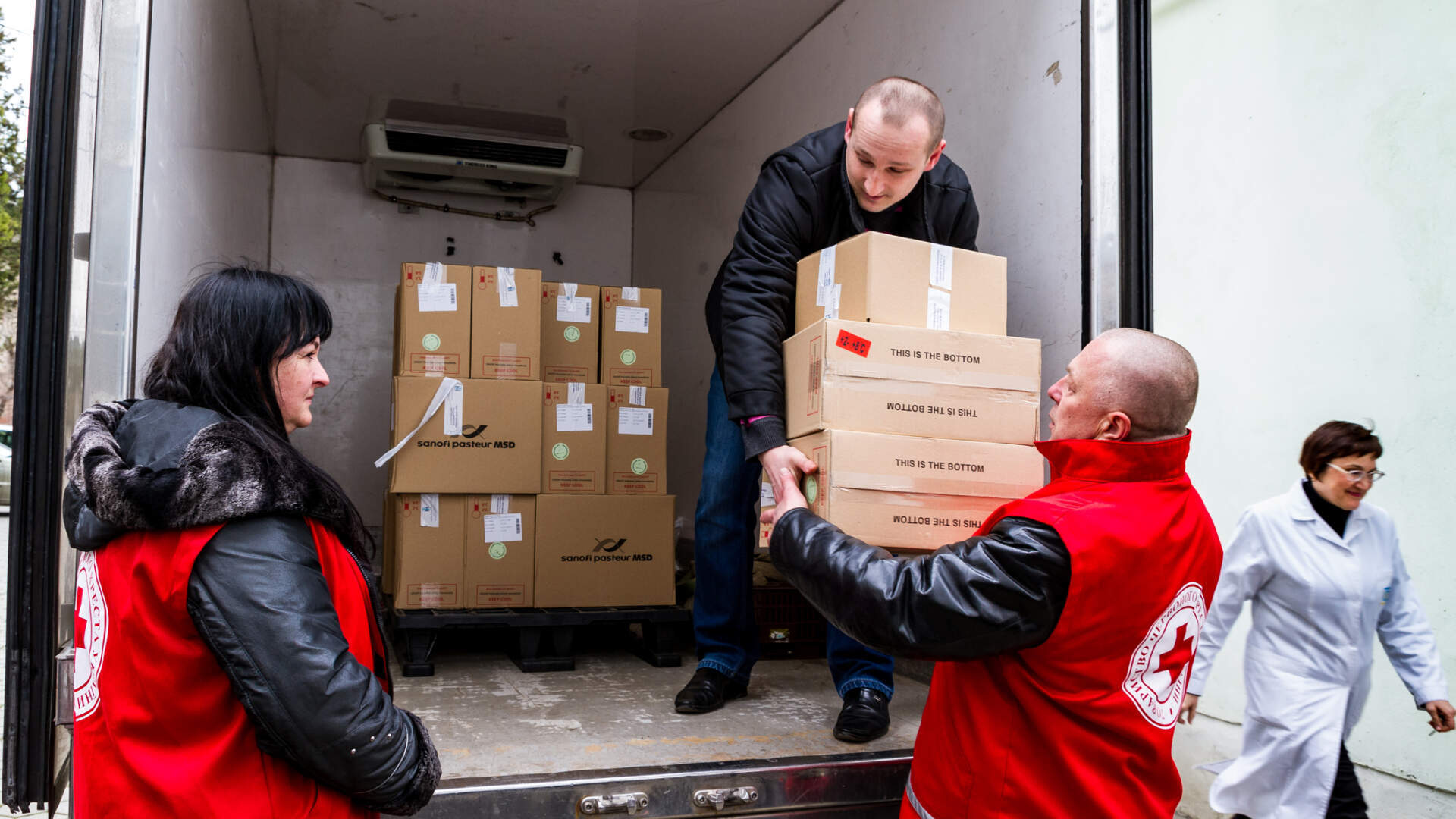
As the world looks on in horror at the destruction taking place in Ukraine, the desire to help is overwhelming. Across Canada and the world, people have given their money, belongings, and time in an effort to provide aid to those in desperate need. Collecting donations, however, is the easy part, whereas the logistical realities of transporting relief are daunting at best and often impossible. Much has been made of supply chain difficulties around the world in recent years, but these pale in comparison to the complications and dangers involved in transporting aid to Ukraine. As intimidating as these challenges are, they haven’t prevented people from taking on the cause.
Relief Needed in the Ukraine
Among the many items needed by both civilians and soldiers are medical supplies, clothing, baby supplies, and practical items such as binoculars and flashlights. The need is felt not just by those in Ukraine, but by those fleeing as well.
Rahul Singh fears for refugees in transit who didn’t have the time or ability to bring much needed medication on their journey. “People that are fleeing the fighting and trying to get to safety, they run with just the clothes on their back,” says Singh, the founder of relief agency Global Medic.1
Canadian Groups Collect Donations
Groups of charities, organizations, and citizens are rising to the occasion, collecting donations and attempting to overcome logistical hurdles in an effort to help. The motto seems to be ‘where there’s a will, there’s a way.’
A volunteer group in Winnipeg collected donations at a community centre and sent them to Toronto, where they were to be flown to Poland.2 Another group in Calgary flew their supplies from Edmonton to Europe.3 This, however, is just the beginning of the journey.
Logistical Difficulties Inside Ukraine
Flying supplies directly into Ukraine is currently out of the question, which means that relief must first be transported to neighbouring countries, then driven into the country, an effort complicated by enormous refugee buildups at the border.
Most international aid is currently being flown to one of several Polish airports. From there, full truckloads are driven to Lviv in western Ukraine by a fleet of trucks hired by the UN’s logistics arm. From this point Ukrainian Railways have carried nearly 6,000 metric tons of aid by rail to cities like Kyiv and Kharkiv, while Ukrainian NGO Razem has organized van shipments to cities in the country’s northeast.4
For shipments smaller than a full truckload, a Polish NGO called TruckersLife has been stepping up to the plate. Until recently the group had been focussed on providing first aid training and exercise facilities to truckers, but have used an outline recruitment initiative to find truckers, who have responded, often working for no pay, and risking their lives in the process.4
Once inside Ukraine, those attempting to transport goods must not only deal with damaged roads and bridges, but the fighting itself, creating fluid and dangerous situations that can dramatically change at a moment’s notice. As a result, routes are constantly being changed, part of a potentially deadly supply chain mission.
It was hoped that humanitarian corridors could be used to move supplies in, while moving those fleeing the violence out of the country. Unfortunately the Russian military has agreed to these corridors, only to later shell or blockade them.5
Vancouver Man Gets Involved
Vancouver’s Chris Ketler is taking matters into his own hands. He’s teaming up with two fellow vets and a paramedic to secure three European ambulances that will be loaded with medical supplies, which the group will drive from Poland into Ukraine themselves. The veteran believes that he can do more good providing aid than joining the fight itself, but is also aware of the inherent dangers of entering a war-torn country.
“If you’re not willing to die for your principles, what do you stand for?” asks Ketler. “There are certain things in this world that are worth the risk. If we can get in there and help even five civilians get out, what is one person?”6
Modern Money Transfer Techniques Utilised
While there are any number of established organisations accepting monetary donations, others have chosen to give directly, utilising uniquely modern platforms. The Government of Ukraine tweeted their Bitcoin and Ethereum wallet numbers, allowing for the direct donation of cryptocurrency. Meanwhile, a growing number of AirBnB users are booking and paying for accommodations in Ukraine. The donors have no intention of travelling to the region, but are essentially utilising the platform to send money to individuals in the country.
Worth the Effort
Kevin O’Connor outlines the logistical challenge at hand; “Can you imagine all the aid that is trying to flow into Poland right now?” asks the VP of Systems Operation Control for Air Canada. The airline is partnering in an effort by US-based Project C.U.R.E. to get medical supplies to Ukraine and Poland. “You have to coordinate a departure out of Canada and arrive in Warsaw, Poland. Can the airport handle it? Is there enough area because there is aid flowing in from around the world?”1
Despite the difficulties, Chris Ketler believes the effort to be worth the risk.
“What if my kids were in the Ukraine right now?” asks the veteran. “What would I do to get over there and help them, and why do we treat other people’s children different?”6
